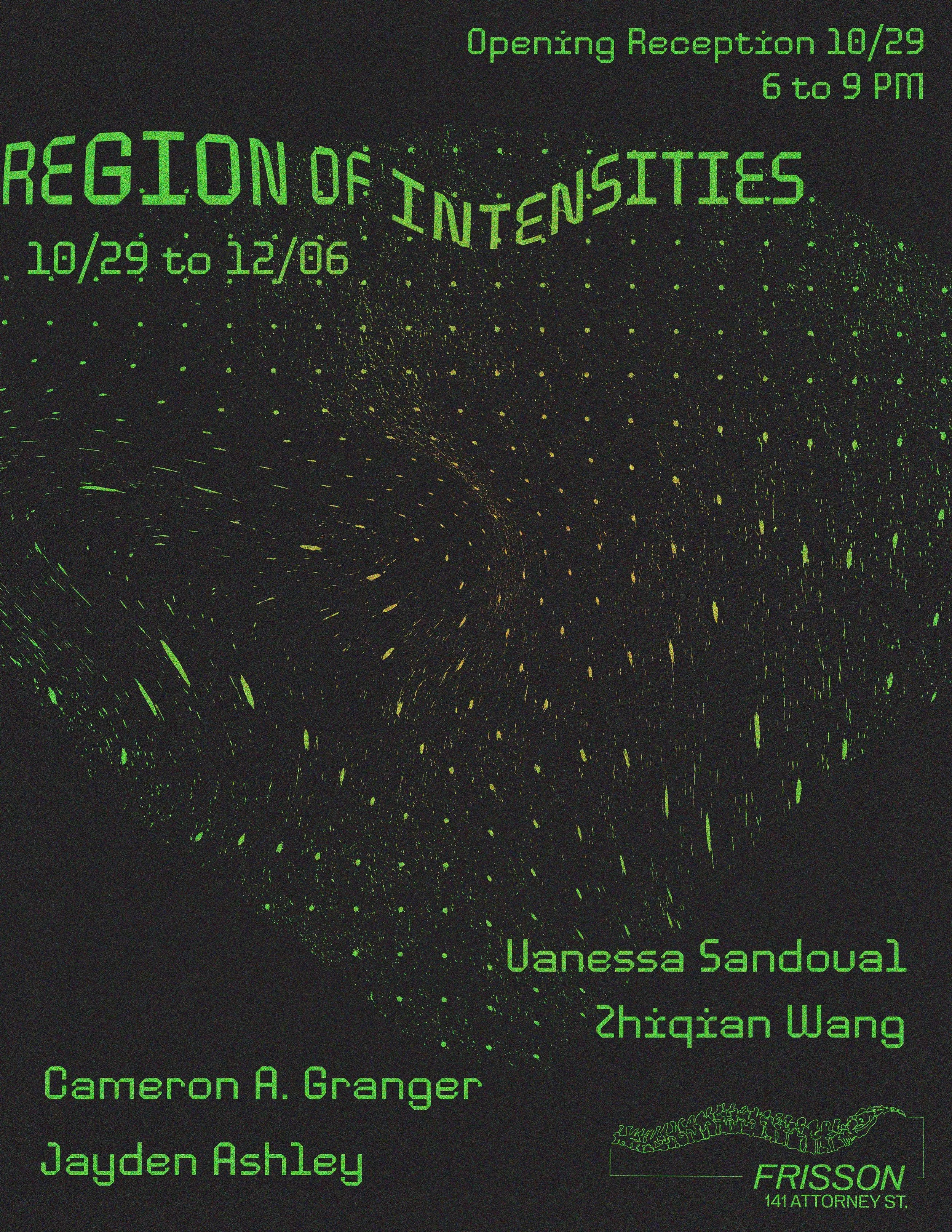* REGION OF INTENSITIES *
* REGION OF INTENSITIES *
October 29 - December 06, 2025
Opening Reception: October 29, 6pm - 9pm
Jayden Ashley, Cameron A. Granger, Vanessa Sandoval, Zhiqian Wang
In any given map, something is included and something is excluded. Shaped by, and in turn shaping reality, maps appear infallible until they become obsolete. An outdated map illuminates the fragility of its authority amidst constantly expanding networks of information. They exist as paper-thin veils between the cartographer and the reader.
The title of the show is taken from the introductory chapter of A Thousand Plateaus (1980), by the French philosophers Giles Deleuze and Felix Guttari. In these passages, the duo extols the map’s value as a dynamic tool which goes beyond mere tracing of reality. A map allows for movement, experimentation, and imagination, working towards a new reality. Its power lies in its ability to reveal pathways and construct new connections between disparate elements.
However, as all tools, the ends to which a map is used is contingent on the user. Thus, maps have the potential to liberate and oppress, to reveal truths and obscure them, and to teach us about the past and to conceive of a future. Maps are like concepts, and to quote philosopher and social theorist Brian Massumi, “A concept is a brick. It can be used to build a courthouse of reason. Or it can be thrown through the window.”
Region of Intensities is constructed around works that employ the act of mapping. Each of the four artists utilize and interpret maps in different ways. They engage with them as tools of control, as markers of destiny, as epistemological tools, and as myth making artifacts. Individual works, which can be seen as maps-unto-themselves, transform into topographical features within each artist's oeuvre. Seen in the context of the exhibition, these bodies of work combine into a new cartography. Thus, ever-expanding concentric circles of mapping grow, yet the boundaries of its next ring remain as terra obscura.
Jayden Ashley is a Brooklyn born and based artist. He explores the vacuum between Black experiences and external perceptions of Blackness. His current work examines the ongoing erasure of Black life and the displacement of Black residents. Grounded in his use of cement, Ashley references sectors from the Home Owners' Loan Corporation’s (HOLC) Residential Security Maps, where the color red was used to mark neighborhoods as “hazardous.” Areas once bordered to designate Black presence as undesirable are now aggressively targeted for urban development and gentrification. Through his cement compositions, Ashley reflects on how borders, geography, and material transformation perpetuate systemic violence against Black communities—from neglect to displacement.
Cameron A. Granger is Sandra’s son & came up in Cleveland, Ohio. He likes pigeons, video games, & memes. Lately he's been thinking about how myth making and narrative have been used as a means to police the imagination, and making movies with his friends. He’s a lifetime member of MINT Collective, long may it live, and an alumni of Euclid Public Schools.
For Vanessa Sandoval art is a practice of broken spells, riddles whose answers are open, and she is attracted to play with riddles, and at the same time, she is in the contradiction of desire for translation. Vanessa is interested in bodies that are affected and affecting their surroundings, and what shares with us the experience of a world that exists in parallel to "the human" that is being apparently erased by it. Every animistic practice uses the body as the engine of the spirit. Vanessa doesn’t know what she is doing, but she wants to believe that she is giving space to the broken spells to cast light on other ways of translating our convulsing reality.
Zhiqian Wang is an artist working across a wide range of media, including traditional Gongbi paintings, installations, interventions, video, and film. In Gongbi painting, she incorporates speculative cosmology in theoretical physics with traditional drawing and mounting techniques that were developed more than 2000 years ago.

